Insight Focus
El Nino may bring flooding in the south and drought in the north and heat wave in China. China’s ability to cope with the impact of natural disasters on agriculture continues to improve. Beet production may be lower than expected, and sugarcane maintains recovery expectations.
What is El Nino?
The American Climate Prediction Center (ACPC) has officially confirmed an El Nino this year. El Nino is a weather event that occurs in periods of 2-5 years when the surface waters in the eastern Pacific become warmer.
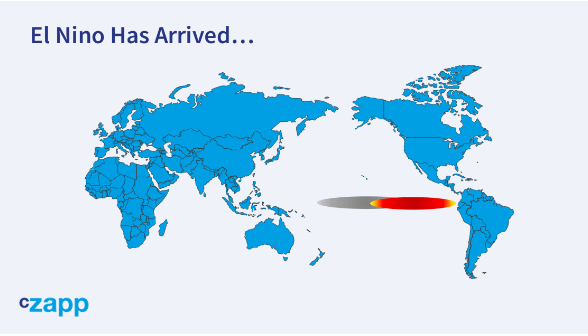
Different times and types of El Nino have different impacts on China. This year, the El Nino formed in the summer, and may lead to waterlogging in the south and drought in the north, as well as high temperatures.
Common keywords for El Nino years include,
- Droughts and floods
- Cold summer in northeast China
- Fewer tropical storms
- Warm winter
Summer Wheat Yields Reduce by 1.3%
Wheat is the first major crop to suffer. Henan accounts for 29 percent of winter wheat production. From the end of May to the beginning of June, just entering the wheat harvest season, Henan Province suffered the most serious protracted rain spell during reaping period in nearly 10 years, leading to wheat mildew and germination.
Under active management, wheat yields reduction was held to a mere 1.3%.
Farmers took advantage of sunny weather to harvest wheat actively. Harvested wheat was dried quickly and classified according to its quality for food or feeding. Henan Province allocated 200 million yuan for wheat drying and warehousing.
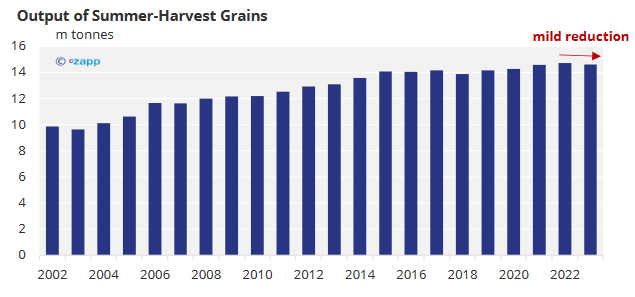
The autumn harvest, which accounts for 74% of total grain production, is even more critical. This may face the challenge of high temperatures and drought in the north, and cold summers in the northeast.
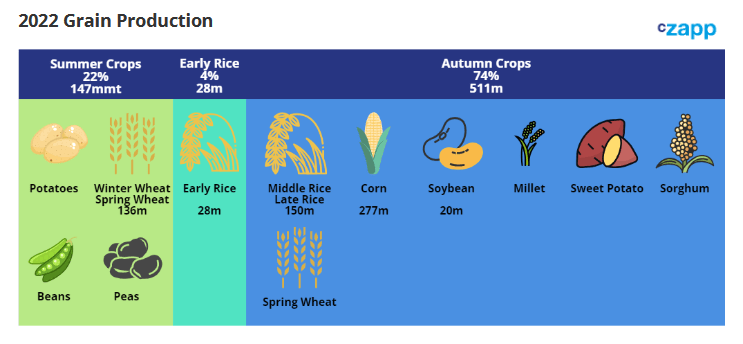
Due to El Nino impact in 1997, the grain production was reduced by 17.9m tonnes. Maize yield fell by 15.7% that year. But in the El Nino year of 2009, although the north also suffered from drought, the drought was eased by rainfall in August (like this year), and the final maize yield fell by 5.3%.
It shows the complexity of El Nino impact.
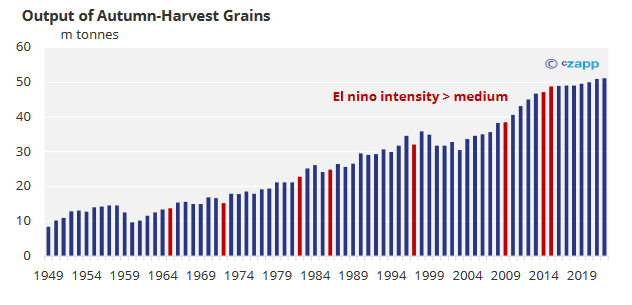
The Agricultural Disaster Loss Showed a Decreasing Trend
It also demonstrates China’s increasing ability to cope with extreme weather through:
- Agricultural infrastructure construction,
- High-quality farmland construction,
- Construction of agricultural disaster warning and defense system,
- Revitalization of seed industry,
- National Climate Change Adaptation Strategy 2035.
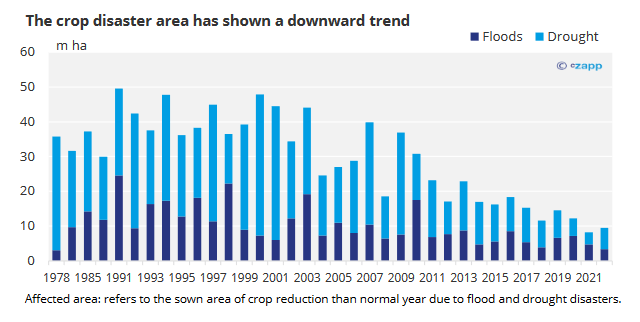
Source: NBSC
Sugar
Back to the world of sugar.
Sugar production is determined by cane/beet yield and sucrose content. Rainfall in the growing period is conducive to the yields, while excessive rainfall at maturity is unconducive to sucrose accumulation.
Considering the impact of El Nino, we maintain our 9.6 million tonnes estimate of sugar production in the 2023/24 season, a small increase despite the high sugar prices.
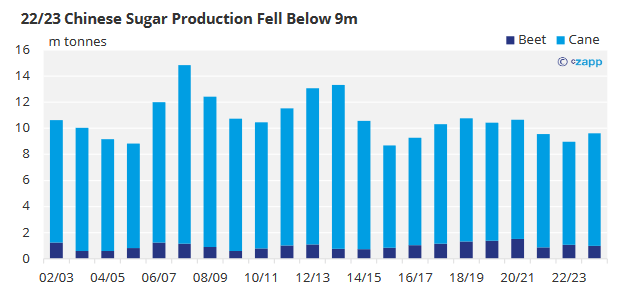
Sugar Beet (10%): North and Northwest China
The beets are likely to be challenged by both drought and flooding. The beet yields in Inner Mongolia fell by 24% in the 2022/23 season due to bad weather and low soil fertility. This year’s sugar beet acreage is expected to decline further in Inner Mongolia, and if yields fail to recover, the final sugar beet production may be lower than expected.
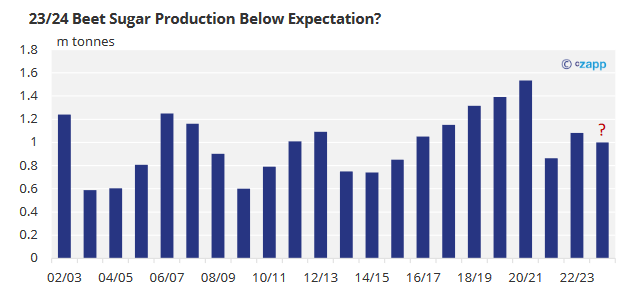
Since June, the northwest and North China producing areas have experienced continuous high temperature weather, and the soil moisture is low. Several rounds of heavy rainfall in northeast producing areas lead to waterlogging disasters in some low-lying fields.
Sugarcane (90%): South and Southwest China
This year’s El Nino is more like the one in 2009. We expect cane yields in Guangxi to recover from a bad 22/23 season due to continuous dry weather. But Yunnan may face more uncertainty.
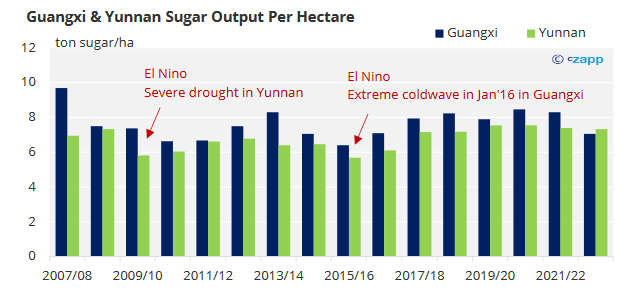
Sugarcane experienced dry weather in first half 2023. Since July, Typhoon Tali has brought a lot of rain to Guangxi, helping to relieve the drought and fill reservoirs. In August, both Guangxi and Yunnan saw heavy rainfall. The water demand of sugarcane in the growth period (June-September) accounted for 54.3% ~ 57.8% of the total growth period.
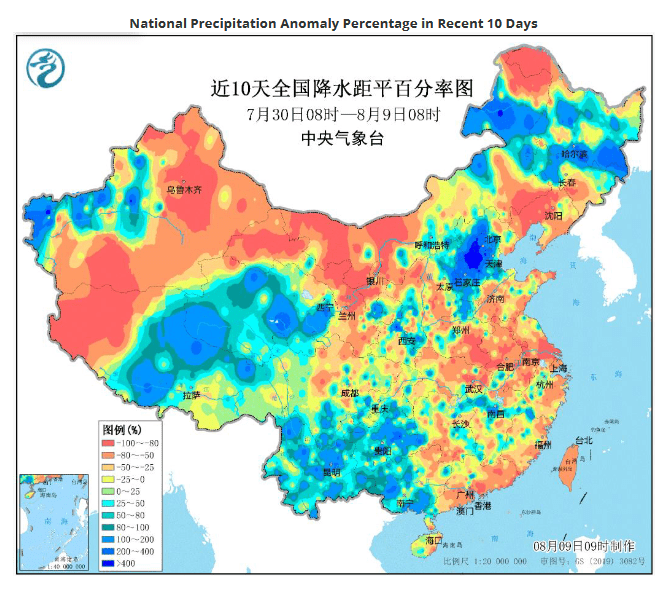
Source: cma
However, the Water Resources Department of Yunnan predicts that the total rainfall in most areas in 2023 will be less than normal, and drought and flood disasters will occur more frequently. And Yunnan just experienced its worst drought in winter and spring since 1961.
This region accounts for 20% of Chinese sugar production.
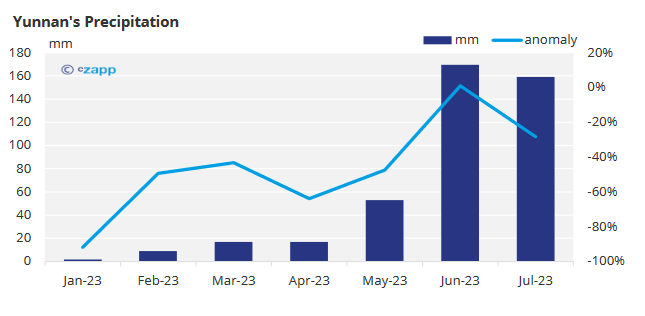
Source: Yunan Meteorological Service
For more articles, insight and price information on all things related related to food and beverages visit Czapp.












